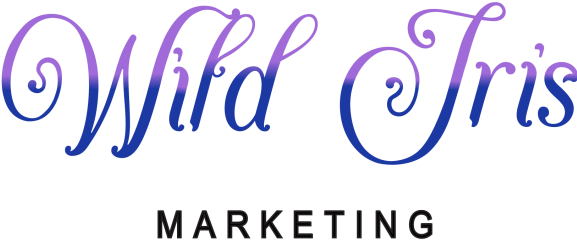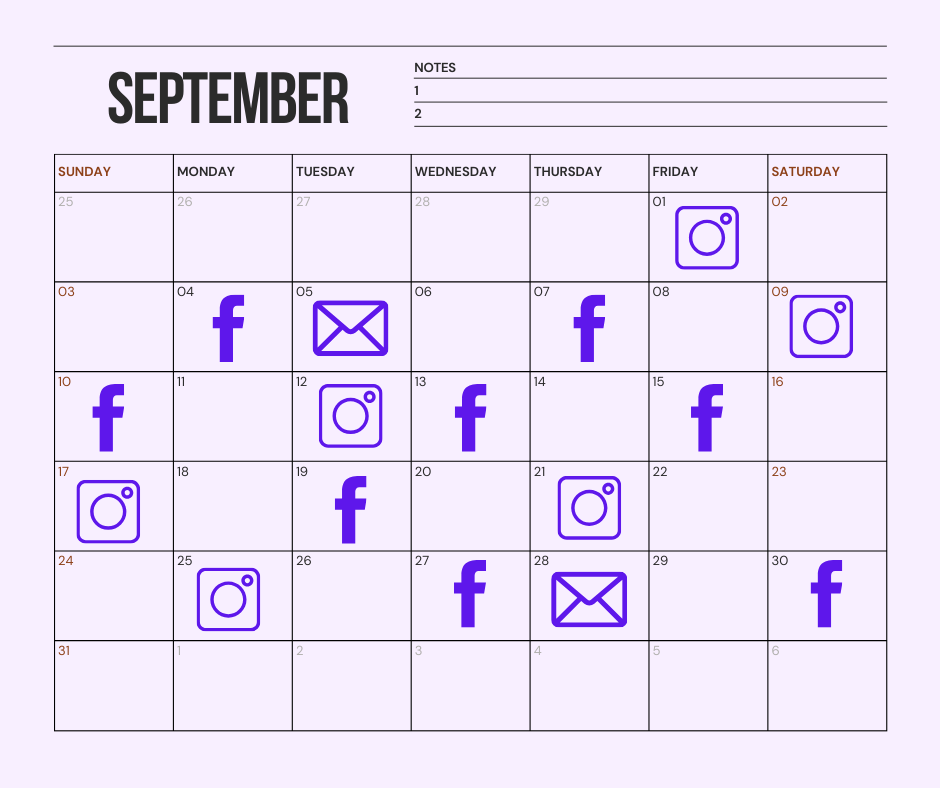Digital Marketing Calendars – Save Time and Money By Planning Your Marketing
As a small business owner, you probably schedule time with your accountant, block out time for medical appointments, schedule time for payroll and more. But do you realize that scheduling as little as 2-3 hours a month can significantly impact the success of your marketing efforts and even save you money?
You’re likely juggling multiple responsibilities—managing your business, serving customers, and ensuring your product or service remains top-notch. With so much on your plate, maintaining a consistent and effective digital marketing presence can feel overwhelming. That’s where a digital marketing calendar comes in. This powerful tool helps you plan, organize, and execute your marketing efforts with ease, ensuring your business stays visible and connected with your audience.
In this blog, we’ll guide you through the steps to create a digital marketing calendar tailored to your business needs, helping you save time, stay organized, and achieve your marketing goals.
Why You Need a Digital Marketing Calendar
A digital marketing calendar is more than just a schedule—it’s a strategic blueprint that keeps your marketing efforts on track. How does it actually help?
Consistency is Key
Regular and consistent content keeps your audience engaged and builds trust among clients and prospects. It is also valuable when someone searches for you because they can see you are a real business and not a fly-by-night organization.
Time Management
How many times have you realized at the end of a busy week that you forgot to “do my marketing”? With a calendar, you can plan ahead and avoid the last-minute scramble for content.
Goal Alignment
A well-thought-out calendar ensures your marketing activities align with your business goals, whether it’s increasing sales, building brand awareness, or growing your email list.
Better Content Coordination
When you map out your content in advance, you can ensure that your messaging is cohesive across all channels.
Set SMART Marketing Goals
Specific
Make sure you know what your marketing goals are. Do you want to get more emails for your newsletter? Do you want to generate more sales of your seasonal offering? Do you want to simply raise awareness of your offerings in your community?
Measurable
How do you know if your marketing is working if the goals you set are not measurable? Maybe you want to increase traffic to your website by 10% or sell out of a specific, low inventory product or you want to sign up 3 new clients for your accounting firm. Make sure you know how to measure the outcome of your marketing efforts.
Achievable
If you are currently a $50,000 per year business and you want to double your business this year, one Facebook ad with a $100 budget is probably not going to achieve your goals. So make sure you can actually have Achievable (or Realistic) goals.
Relevant
Are your goals relevant to your business as well as your audience? Are you trying to sell Christmas ornaments in May? Are you promoting babysitting services to elderly people over age 65? Make sure your offering and your audience match and are relevant to one another.
Time-bound
Make sure you know how long your marketing campaign will go and when you need to see results to feel it has been successful. When will you check analytics? What do you expect to see? How long will you give the campaign to work before you make changes?
Define Your Content Themes and Types
Next, consider the themes and types of content that will resonate with your audience and support your goals.
Content Themes
These are the broad topics that your content will cover. For instance, if you run a fitness studio, your themes might include workout tips, nutrition advice, and client success stories.
Content Types
Vary your content to keep your audience engaged. This might include blog posts, social media updates, email newsletters, videos, and infographics. Balancing promotional content with value-driven content is key to maintaining audience interest and trust.
Choose Your Channels and Plan Your Posting Schedule
With your themes and content types in mind, it’s time to decide where and when you’ll share your content.
Select Your Channels
Focus on the platforms where your audience is most active. If your customers and the type of content you will produce are primarily on Instagram, that’s where you should concentrate your efforts. If you’re targeting professionals, LinkedIn might be a better fit. If you have a good mailing list, an email newsletter campaign is almost always a good strategy.
Frequency and Timing
Determine how often you’ll post on each channel. While daily posts may be beneficial for a few businesses on social media, a weekly or bi-weekly schedule might work better for your clients. Less frequent but more value-added blogs or newsletters are more likely to provide good response than an email every day or two. Be realistic about what you can manage consistently and how often your audience wants to hear from you.
Utilize Tools and Templates
To streamline the process of building and maintaining your digital marketing calendar, leverage tools and templates that suit your business’s needs.
Tools
Google Calendar, Trello, Excel and pen and paper are all excellent options for creating and managing your marketing calendar. These tools allow you to visualize your schedule, assign tasks, and track progress.
Templates
Use a pre-made template to get started. A simple spreadsheet template can help you organize your content by date, channel, and type, ensuring nothing falls through the cracks.
Develop and Execute Your Calendar
Now that you’ve laid the groundwork, it’s time to start filling in your calendar.
Map Out Your Calendar
Plan your content for a month, quarter, or even a year in advance. Include key dates like holidays, sales events, and product launches. This will help you stay ahead and avoid last-minute rushes.
Batch Content Creation
To save time, consider batching similar tasks. For instance, write several blog posts in one session, or create a month’s worth of social media posts at once. This approach reduces context-switching and increases efficiency.
Track Performance and Adjust
Use analytics tools to monitor the success of your content. If a particular type of post is performing well, consider creating more of it. If something isn’t resonating, don’t be afraid to tweak your strategy.
Get Started!
Commit to yourself and your business for three months. It may seem daunting at first but if you design, create and schedule one month of content at a time, all you have to do the rest of the month is reply to client responses and check your analytics from time to time to make sure you are on the right track.
Creating a digital marketing calendar may seem daunting at first, but with a clear plan, the right tools, and a commitment to consistency, it can become a valuable asset to your small business. Start simple—focus on one or two channels, and gradually expand your efforts as you gain confidence. Remember, the goal is to make your marketing more manageable and effective, helping you connect with your audience and grow your business.
At Wild Iris Marketing, we specialize in helping small businesses like yours create and implement effective digital marketing strategies. Whether you need help setting up your marketing calendar or executing a full-scale campaign, we’re here to support you every step of the way.


